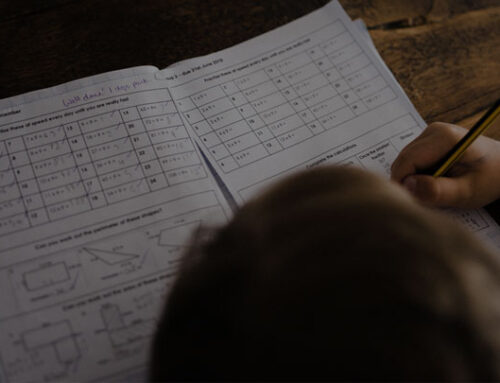
If math is difficult for you, audit the course first. You will get the most from the course if you take notes, do your homework, ask the teacher questions, study for it, and take all the tests. You will have no pressure of being graded.
Before registering for math, research which teacher would be best for you. Ask other students which teachers they liked and why. Visit prospective teachers during their office hours; ask about their teaching methods and if you could sit in one session of their course. Be sure to select a teacher who:
Explains concepts clearly
Welcomes questions
Willingly helps students outside of class
Gives fair tests
Provides helpful handouts to complement your class notes.
Attend all classes and take full class notes. Research has shown that successful students never cut class and usually take down at least 64% of what is discussed in class. Failing students write half as much and often miss class. Remember, missing even one class can put you behind in the course by at least two classes. Do you know why?
Consider attending more than one section of the course. By hearing a difficult concept explained a second time you may understand it much better.
Make it a practice to read over the topic or chapter before going to your math class. This will give you a much better understanding of what is being discussed in class and as a result, you will learn more from the lecture.
Organize your notes into one large spiral or loose-leaf notebook devoted only to math. Use the first half for class notes and the second half for homework. Take a complete set of class notes and add any helpful clarifications to your notes that you hear in class. Mentally follow all explanations and try to understand the concepts and principles. Then write down the main points, steps in explanations, definitions, examples, solutions, or proofs.
Dates each day’s class notes. Write the topic or chapter heading on top of the page. Leave a 2″ margin on the left side for comments. Use only one side of a page, leaving the back for additional examples, notes, and clarifications.
Label both your notes and your textbook using categories such as (a) definition of…, (b) theorem…, (c) example or discussion of examples, (d) description of a procedure for solving a problem type, (e) a proof of a theorem or a derivation of a formula, (f) a list of procedure steps, and (g) formulas or equations.
It is important to stay current. Do not allow yourself to fall behind or the entire course will become an effort and a struggle for you.
Review immediately after class and again eight hours later. Fill in all the missing words or incomplete explanations. Recite important concepts in your own words. Research shows that most of the information is lost within the first 20 to 60 minutes after learning. However, if you review immediately after class and again within the same day, and then do weekly and monthly reviews, the information you have learned will remain in long-term memory.
Ask questions. Always remember you have the right to ask questions before, during, and after class. Never avoid asking a question out of fear of looking stupid. Do not allow a question to go unanswered. Get help fast.
Create questions for yourself when you study and then answer them. Be persistent.
When you feel “lost” ask your teacher to explain the first step that you did not understand; then question any later steps that you still do not follow. When you cannot see the overall picture of what the teacher is doing, ask questions. See your instructor during office hours and visit the math learning center for help. Notice when you are beginning to get into trouble and seek assistance immediately.
To get the most benefit from a help session:
Use question marks to identify confusing material in your notes or textbook.
Write down specific questions you will ask.
Later review what you have learned by “saying” and “doing.”
Ask your instructor or tutor if you could explain to them what you have just learned and if you could demonstrate your knowledge by doing a new problem.
Always remember the “say and do” principle. Research shows that we remember only 10% of what we read, 20% of what we see, but a full 90% of what we say and do. So, whenever possible say and do.
Work out lots of sample problems. Practice, practice, practice. Do assigned problems and lots more. Make up your own problems. Get sample problems from other books. Work with a classmate and explain aloud what you are learning and how to solve problems. Remember the more you “say and do” the more you will be able to recall what you’re learning. You must always be actively involved in the learning process.
The best time to do your homework is the same day it is assigned. This will help reinforce what you have just learned. Estimate the right answers before you work the problems out. Substitute your answers back into the problem. Redo the problem in a different way to see if your answer still matches.
Read and study all your textbook explanations of each type of problem. Whenever possible use additional textbooks and study guides as resources. Each book will discuss your topic differently and offer different examples. This is an excellent way to clarify difficult concepts and to give you more practice problems.
Work with a review or course outline book that applies to your math course. They provide many worked-out examples and summary collections of problems and answers which are useful for preparing for tests. Always work out a problem first before reading how the author solved it. Examples of course outline books include: Schaum’s, AMSCO, Barron’s, and Barnes and Nobles.
Identify the different types of problems you are learning. Note the elements of each. By identifying the different types of problems, you are more likely to be able to isolate difficult areas in which you need more practice or help.
Describe in your own words the similarities and differences between the different types of problems you are learning. Do this aloud with someone else. By understanding the structure of each type of problem you will be able to select the appropriate method or formula for solving it.
Know and understand your math terminology. This is one of the keys to success in any field. Use 3″ by 5″ review cards to study math’s own unique vocabulary. Put the term on one side and the definition on the other. Carry these cards with you everywhere and review them at odd moments throughout the day. You will not even feel like you are studying.
Never attempt to memorize a formula (or rule, proof, or procedure) until you have attempted to understand it first. This understanding will help you recreate a formula (or procedure, etc.) if your recall falters in any way. Make sure you can illustrate the definitions, theorems and the use of the symbols. You may want to use 3″ by 5″ cards to help you memorize some formulas for convenience and quick recall.
Describe in your own words the similarities and differences between the different types of problems you are learning. Do this aloud with someone else. By understanding the structure of each type of problem you will be able to select the appropriate method or formula for solving it.
Know and understand your math terminology. This is one of the keys to success in any field. Use 3″ by 5″ review cards to study math’s own unique vocabulary. Put the term on one side and the definition on the other. Carry these cards with you everywhere and review them at odd moments throughout the day. You will not even feel like you are studying.
Write up summary sheets of math terminology and formulas and review them often.
Successful math students study math two hours per day at least 5 days a week. In addition, they work out 10 new problems and five review problems during each study session.
If math is your most difficult subject, make sure to study it before all other subjects. Do not leave it until the end. You must study math when you’re most alert and fresh. It will go better for you and you will recall more. Research also shows that you will retain more information if you take 5 to 10-minute study breaks every 20 to 40 minutes.
Act as if you have control of your level of success in math. Act as if you are really enjoying it. Eventually, your habit of pretending and resulting in success will make your feelings match your behavior.



